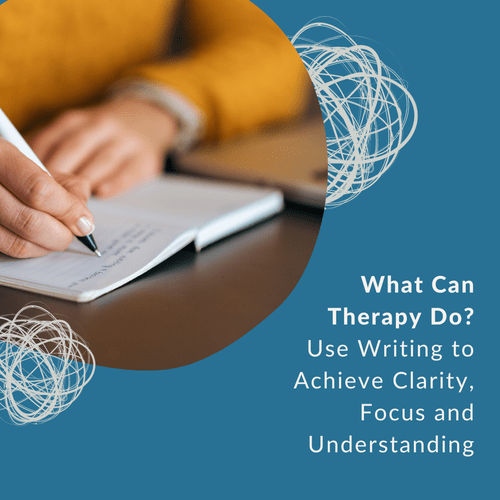Talking with a mental health professional is beneficial for a countless number of reasons. Not only does it help with very real issues like depression, trauma, and anxiety, but it can be extremely useful in periods of acute stress ― which many are experiencing right now given the current events.
With social distancing and self-isolation, therapists all over the country have had to cloe their office doors and find new ways to serve their clients. That’s why teletherapy is becoming more crucial than ever.
Research suggests that teletherapy is just as effective as in-person therapy and will allow you to get support while following any social distancing guidelines or quarantine restrictions.
If there was ever a time for online therapy, we’re living in it right now. Whether you’re a regular client or just trying therapy for the first time here are some tips on how to use teletherapy to your advantage and get ready for your first session.
Know that it’ll be an adjustment
If you’re used to going to your therapist’s office, suddenly opening up to them on your bed or in your kitchen might be a little strange. If this is your first time, you may not know how to share your feelings with a new face over video chat. All of this is completely normal. A positive perspective is that you may be able to feel even more comfortable to dig deep during your sessions, given you will likely be in your own home or space.
Get dressed and treat it like you’re going to a normal appointment
The best results will come if you treat teletherapy like any other appointment.
This might mean going to a different room or area of your house or putting on certain clothes that would make it feel more like a typical appointment to you. This will allow you to get in a head space that is different, especially if you are in your house right now a lot more than you usually are.
Treat it like regular therapy if possible ― even if this was not the intended or preferred method of communication ― means working with your therapists on goals, figuring out if any of those goals need to be changed or altered given the current stressors, and continuing to make progress towards them.
Prepare your environment and equipment
Before your appointment check that laptop, tablet, or phone are charged with a good webcam and audio connection. If you can, have your device plugged in and charging during your session. Earphones or headphones can help to prevent sound echoing and to allow you to fully focus on the conversation with your therapist.
Set up your space. Check your internet connection, and make sure your space is set up comfortably 15 minutes or so before your appointment. You might sit on a chair in front of a desk or table, or if you’re seated on the ground, a meditation cushion can be a grounding option. As you’re setting up, take this time to start quieting your mind and shift your attention from work, kids, or other commitments to therapy and healing. Try to minimize distractions as much as possible.
Use your first session to establish what you want to accomplish.
For those who typically go to therapy in person, your first teletherapy appointment is a good time to check in on your goals and progress. If you’re new to therapy entirely, expect your first session to lay out what you want to achieve with the process.
Getting started can often be the hardest part, but it may provide some comfort if you can know what to expect going into your first session. Therapists will start each session by making sure you feel comfortable, before working collaboratively with you to formulate a treatment plan and review different methods to help you address your needs.
Issues You May Want to Address
If you’re meeting with a therapist online because you’re social distancing, you may have coronavirus-related issues to address.
Here are some examples:
- How can I manage my mental health when I’ve reduced my social contact?
- What can I do about my anxiety surrounding the coronavirus?
- Now that I’m spending more time at home, what steps do I need to take to stay as mentally healthy as possible?
- Are there specific exercises or strategies I can use to build mental strength?
- How should I talk to my kids about the coronavirus?
- What can I do about my financial stress during this time?
Look at teletherapy as a way to help with socializing while social distancing.
Think of online therapy as a way to get some connection and understanding in an environment that otherwise feels isolating right now.
Humans are social beings. People need people. Feelings of anxiety, fear, and isolation are extremely common in this type of situation, and teletherapy is an optimal solution to help individuals manage their mental health and stay connected with the care you might need. Online therapy can also help you nurture your current relationships from a distance.
Our significant relationships with others and our emotional connections with others will help get us through this very difficult time. Social connections are vital during periods of intense stress like this one, and a therapist can help you keep your relationships strong when you’re physically apart.
Remind yourself that therapy is extremely beneficial right now
We’re dealing with something none of us imagined. It’s okay to feel a range of emotions. Therapy can help you navigate that.
These are uncertain and unusual times, and the situation is unprecedented. A significant number of us are stressed, anxious or just unsettled given the current situation. It’s important to know that these feelings are normal and to be expected. Understand that this situation will pass eventually, but in the meantime, focus on being kind to yourself. If you need additional support or personal connection, it’s there.
Online therapy can be an empowering and accessible way to take care of your mental health, especially during times when it’s not feasible to make a trip to your therapist’s office. And just like in-person therapy, if you are committed to making the most of your therapy time, it can be a rewarding experience with long-term benefits.
If you are interested in getting started with teletherapy with one of our clinicains, please don’t hesitate to reach out.










